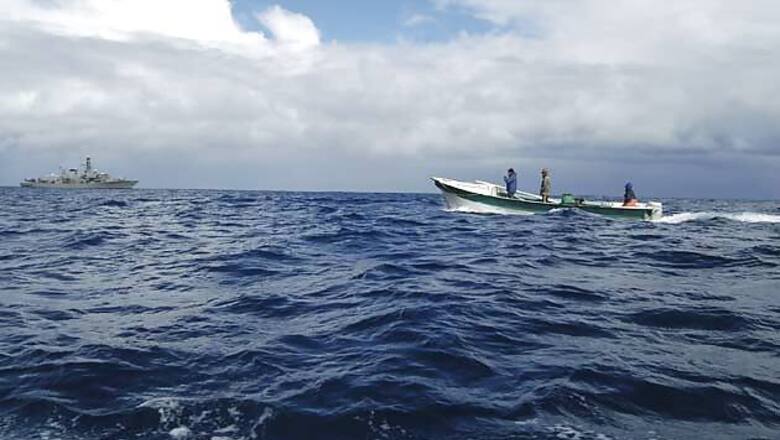
views
Sydney/Perth: A US Navy underwater drone sent to search for a missing Malaysian jetliner on the floor of the Indian Ocean could take up to two months to scour a 600 sq km area where the plane is believed to have sunk, US search authorities said on Tuesday.
The prediction coincided with the end to the abbreviated first mission by the Bluefin-21 autonomous underwater vehicle six hours into what was meant to be a 16-hour operation on Monday after it exceeded its 4.5 km (14,750 feet) depth limit and was automatically returned to the surface.
The introduction of the undersea drone marks a new slower paced phase in the search for Malaysia Airlines MH370 which disappeared on March 8 and is presumed to have crashed thousands of km (miles) off course with the loss of all 239 people on board.
Authorities, who soon plan to scale back the air and surface search, are confident they know the approximate position of wreckage of the Boeing 777, some 1,550 km (960 miles) northwest of Perth, and are moving ahead on the basis of four acoustic signals they believe are from its black box recorders.
But having not heard a "ping" for almost a week and with the batteries on the locator beacons two weeks past their 30-day expected life, the slow-moving "autonomous underwater vehicle" was launched on Monday to try and locate wreckage.
"The AUV takes six times longer to cover the same area as the towed pinger locator. It is estimated that it will take the AUV anywhere from six weeks to two months to scan the entire search area," Lt. JG Daniel S Marciniak, a spokesman for the U.S. Seventh Fleet, said in a statement.
From its aborted first mission, the Bluefin-21 produced six hours of data which authorities analysed to find no objects of interest, Marciniak added. The drone was expected to embark on its second search mission late on Tuesday.
The robot, which takes two hours to descend another two to return to the surface, as well as several hours to download data, will build up a detailed acoustic image of the area using sophisticated "sidescan" sonar. It hopes to repeat its success in finding a F-15 fighter jet which crashed off Japan last year.
It is capable of spending up to 16 hours scouring the sea floor. If it detects possible wreckage, it will be sent back to photograph it in underwater conditions with extremely low light.
Officials are focusing their acoustic search on an area equivalent to a medium-sized city - 600 sq km (230 sq miles). But the much broader search area off the Australian coast covers about 60,000 sq km, according to the government. The deep sea area now being searched, the Zenith Plateau, has never been mapped in detail because it is not in any country's economic zone.
However, the sea floor is likely covered in "foraminiferal ooze", a sludge formed by microscopic marine organisms, which would show up any large metallic object clearly, James Cook University marine geologist Robin Beaman said.
"A sidescan is very good at detecting the difference in the acoustic return of a hard object versus a soft, muddy sea floor," he said. "This is quite a good environment for looking for wreck debris, albeit deep."
The Bluefin's main challenge was to remain within 50 metres (165 feet) of the seabed to ensure the best quality sidescan detection without exceeding its 4.5 km depth limit which could risk damaging it, Beaman said.


















Comments
0 comment